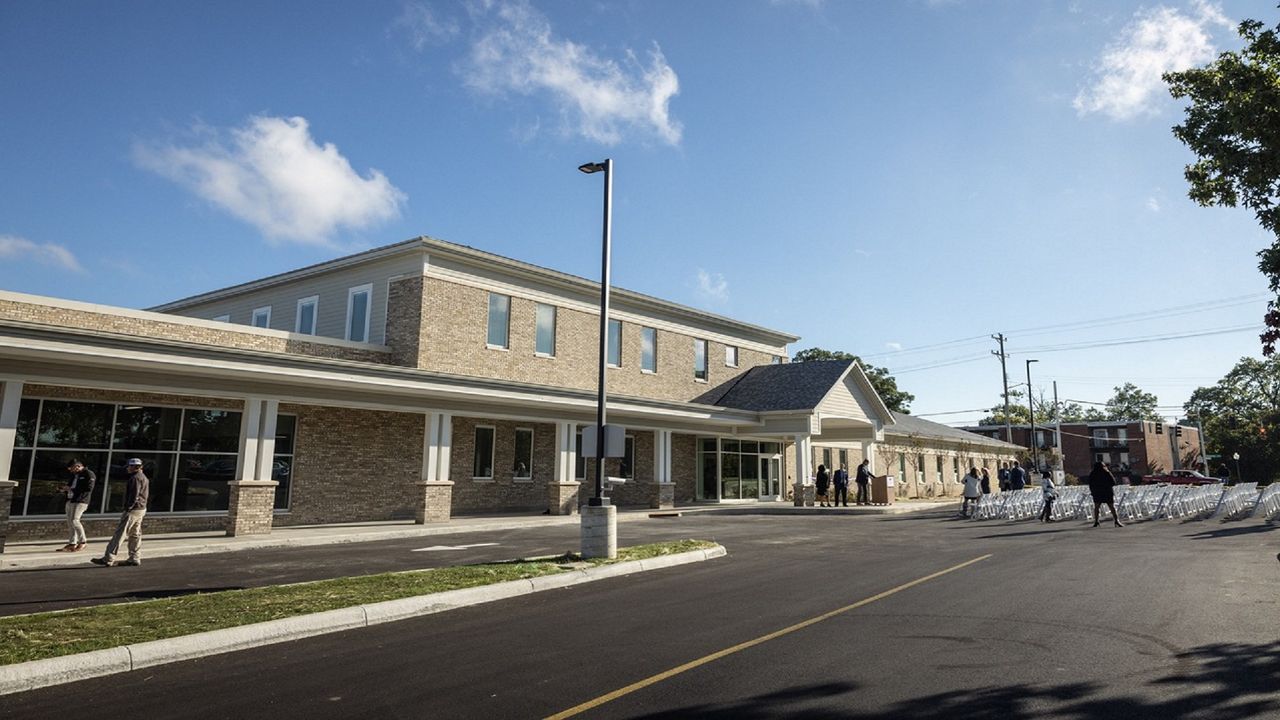CINCINNATI — As pandemic-related housing support programming comes to a close, a local nonprofit is welcoming a $5 million grant aimed at preventing an increase in homelessness among Hamilton County families.
What You Need To Know
- Strategies to End Homelessness received a $5 million grant to combat family homelessness in Hamilton County
- The money comes from the Jeff Bezos-led Day 1 Families Fund
- Local housing experts expect homelessness to rise because of the end of pandemic era housing programs and rising rent costs
- The fund dollars must be spent within five years
Strategies to End Homelessness received the funding from the Bezos Day 1 Families Fund. It’s the largest private gift in the nonprofit’s history.
Launched in 2018 by Amazon founder Jeff Bezos, the Day 1 Families Fund offers annual leadership grants to organizations helping families move from homelessness and shelters to permanent housing.
This year, the Day 1 Families Fund issued $123.45 million in grants to 40 organizations across the nation. Strategies to End Homelessness is the only one from Ohio.
The $5 million is the single largest private grant in the organization’s 15-year history.
“The future of homelessness is family homelessness, and children experiencing homelessness if something significant does not change,” said Kevin Finn, who’s been CEO of Strategies to End Homelessness since it began operations in 2007. “These dollars will be very useful because they are targeted at families and are also very flexible.”
Strategies to End Homelessness plans to use the one-time funding to both expand capacity in existing programs and support new services that data shows are “desperately needed,” such as shelter diversion, Finn said.

The nonprofit works with 30 regional partners, one of which is Bethany House Services. Its initiatives range from emergency shelter and shelter diversion to family services, which includes things like life skills training.
Families stay with Bethany House for as short as a month, but some families have spent as long as six months there while looking for permanent housing, said Juwana Glover, the organization’s chief operations officer. The current average stay is 79 days.
Mar’shay Hatcher and her two young children have been staying at Bethany House’s new facility in Bond Hill for the last two months.
The 28-year-old had been renting a home on Fairbanks Avenue on Cincinnati’s west side. Hatcher’s landlord refused to do repairs and wouldn’t do anything to address the fact the basement kept flooding, she said.
“I wasn’t able to live there anymore. We had to go,” she said. “We would have been outside if it weren’t for Bethany House. They were the only support we had.”
Hatcher noted the availability of clothing and help with child care and other services for her children to ensure they don’t fall behind in school. Bethany House also helps with transportation.
“They help you get connected to the people and resources you need to handle whatever comes up,” Hatcher said.
Glover stressed that new funds will help Bethany House and other providers better serve a growing number of families in need.
Bethany House, which has 43 bedrooms, is one of the “big four” family shelter agencies that work with Strategies to End Homelessness. The others are Found House Interfaith Housing Network, YWCA of Greater Cincinnati and Salvation Army. There are six other shelters for single individuals.
Combined, the four served about 700 total families in their shelter and through shelter diversion efforts, and many more through various housing programs, according to Strategies to End Homelessness.
But there are a lot more families experiencing homelessness across Ohio than there are beds available, Finn said. He noted that’s only about a third of the actual need in our region.

“About 70% of the families (in Hamilton County) who reached out for help got nothing because of either a lack of funding available or a lack of bed space,” Finn said. “All those other families that requested those services couldn’t be taken in and were turned away with nothing.”
The “even more troublesome part,” Finn said, is that those numbers may go up because of increased rent prices and the return of evictions. He called a lack of affordable housing the greatest cause of homelessness in the region.
In Hatcher’s case, she started looking for a two- or three-bedroom a few months before she ended up at Bethany House. She couldn’t find anything affordable in her search area, which expanded to Dayton, Ohio and Northern Kentucky.
Hatcher’s unemployed, she said, and her housing situation is making it difficult for her to find work to support her 7-year-old son and his younger sister, 3.
“Right now, those stimulus dollars are expiring and going away, but the rents are not coming back down and if anything, they’re going to continue going up,” Finn added.
Through the grant, Strategies to End Homelessness can support families and those in need “a little earlier,” before they’re actually without housing, Finn said. The new funds can go toward rent and down payments.
A portion of the money will go toward what Finn described as “aftercare services” for families once they’re back in permanent housing. One of the biggest indicators of future homelessness is past homelessness, Finn said.
“Typically, once we’ve managed to get a family out of homelessness and back into housing, we can’t stay active with them or help them if they were to hit a bump in the road, such as a job loss, that jeopardizes their new housing,” he added.
Under the terms of the grant, Strategies to End Homelessness has up to five years to exhaust the entire $5 million.
“It’s nice to have the flexibility to use the money in a way that is best for families that are homeless,” Finn said.



